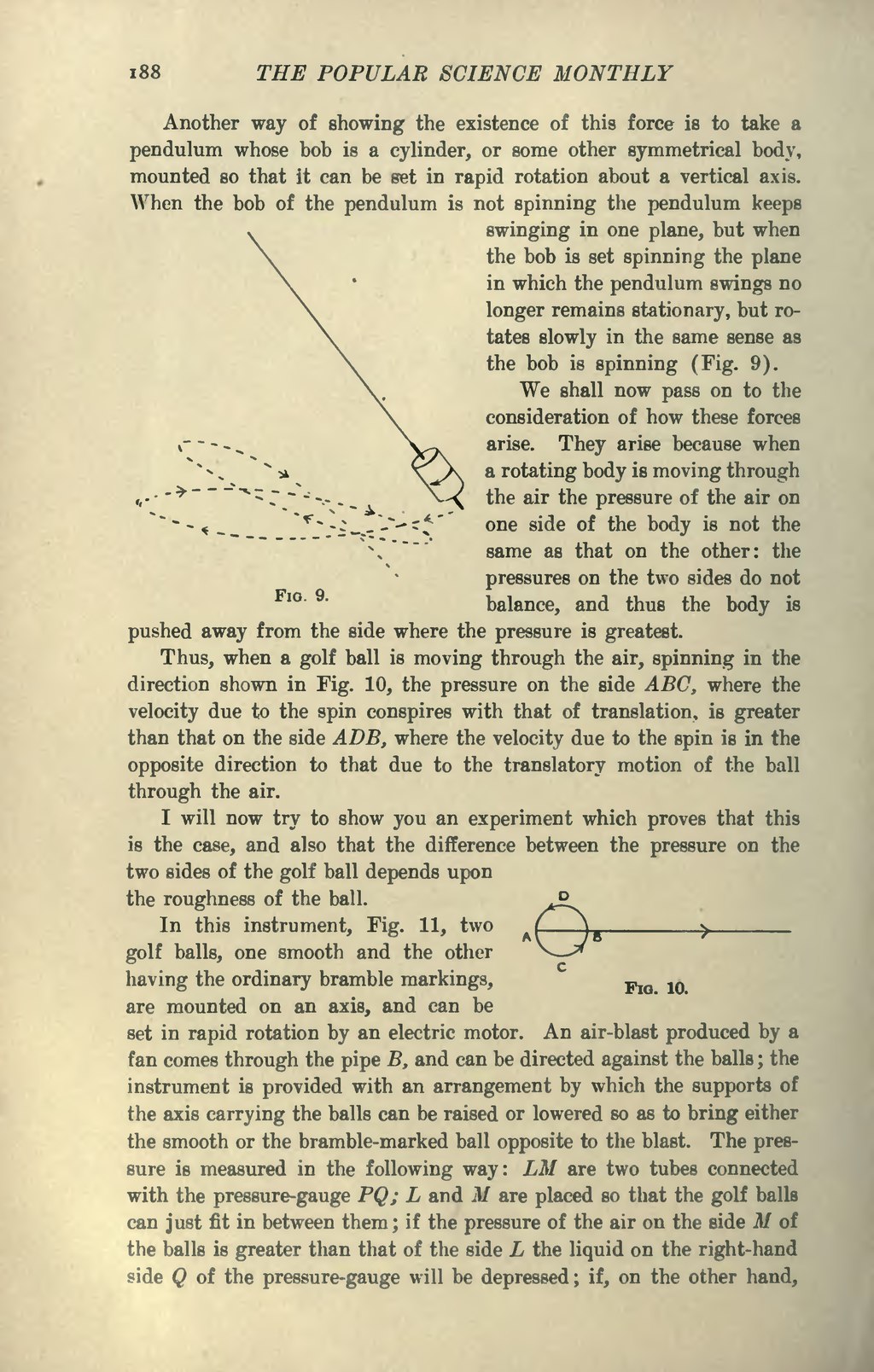Another way of showing the existence of this force is to take a pendulum whose bob is a cylinder, or some other symmetrical body, mounted so that it can be set in rapid rotation about a vertical axis. When the bob of the pendulum is not spinning the pendulum keeps swinging in one plane, but when  Fig. 9. the bob is set spinning the plane in which the pendulum swings no longer remains stationary, but rotates slowly in the same sense as the bob is spinning (Fig. 9).
Fig. 9. the bob is set spinning the plane in which the pendulum swings no longer remains stationary, but rotates slowly in the same sense as the bob is spinning (Fig. 9).
We shall now pass on to the consideration of how these forces arise. They arise because when a rotating body is moving through the air the pressure of the air on one side of the body is not the same as that on the other: the pressures on the two sides do not balance, and thus the body is pushed away from the side where the pressure is greatest.
Thus, when a golf ball is moving through the air, spinning in the direction shown in Fig. 10, the pressure on the side ABC, where the velocity due to the spin conspires with that of translation, is greater than that on the side ADB, where the velocity due to the spin is in the opposite direction to that due to the translatory motion of the ball through the air.
I will now try to show you an experiment which proves that this is the case, and also that the difference between the pressure on the two sides of the golf ball depends upon the roughness of the ball.  Fig. 10.
Fig. 10.
In this instrument. Fig. 11, two golf balls, one smooth and the other having the ordinary bramble markings, are mounted on an axis, and can be set in rapid rotation by an electric motor. An air-blast produced by a fan comes through the pipe B, and can be directed against the balls; the instrument is provided with an arrangement by which the supports of the axis carrying the balls can be raised or lowered so as to bring either the smooth or the bramble-marked ball opposite to the blast. The pressure is measured in the following way: LM are two tubes connected with the pressure-gauge PQ; L and M are placed so that the golf balls can just fit in between them; if the pressure of the air on the side M of the balls is greater than that of the side L the liquid on the right-hand side Q of the pressure-gauge will be depressed; if, on the other hand.
